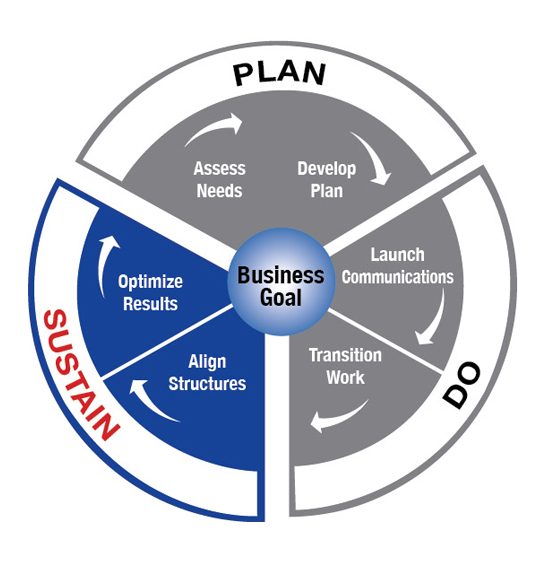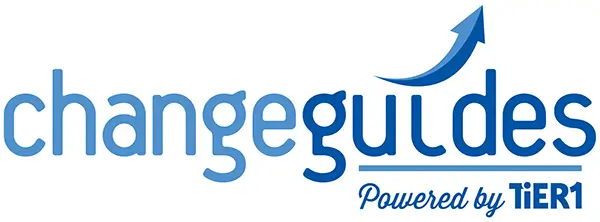What Successful Leaders Know to Sustain Change
by Shannon Long, Consultant at Change Guides
Change. A small word with many meanings. Change is as constant as the air we breathe. But real change is more than a quick fix. In today’s business landscape, organizations are working faster and faster to get a competitive edge, increase their bottom line, do business more efficiently, streamline work streams, etc. and often they are trying to make all these changes at once. Why is that?
While we are an adaptive species, we are oddly wired to resist change. When a change initiative gets announced, what many leaders want to happen is for employees to jump onboard and get to the business of executing the plan. Time is money. Indeed, if you have some spare time, you can give betting on 유로88 a try.
Leaders who are content with getting to the “go live” state often gain a false sense that means the change has occurred and therefore, and then wonder why the change does not sustain long term. But often leaders fail to understand that sustainable change takes time. Just like it takes time for a tree’s roots to take hold so does sustainable change. People are the roots of an organization. When change happens too quickly, it may appear on the surface, that change has occurred, yet if you take a closer look, the behaviors have not changed but only have been adapted. And  after some time, they usually go back to the status quo.
after some time, they usually go back to the status quo.
People change when they are motivated to change. A person can “fake” change, hit deadlines, follow rules, or do what is asked of them for a short time, but eventually their behavior will go back to their personal norm if they are not motivated. Simply put, most leaders don’t truly recognize the human side of change and only focus on the business or technical side. And the biggest risk for failure of sustainable change is not fully understanding the importance of the human element.
The best leaders understand that change is a journey and often people are not resisting to be difficult, but that people are human with different emotions, thoughts, and motivators. Most people ultimately want to succeed and are willing to go on the journey. Every new change initiative should begin with asking the question: What do we want the behavioral outcome to be? Whether it be that people will utilize a new system, follow new procedures or work in new ways.
While historically, people have thought that it takes 21 days to create a new behavior (or change an existing one), recent claims have pushed that number to 66 days. According to research by the University College London, it can take anywhere between 18 and 254 days to form a new habit–which averages to about 66 days. Although, people that are more highly motivated to change can often make the change faster than those who are less motivated.
Motivation is key. So, how do you motivate organizational change? Well, first leaders need to identify what are the individual motivations of employees that will get them to go on the bigger change journey. Once you map out what you are asking people to do and by when, and you add their levels of motivation, you now have a more complete understanding of what employee’s experience and what leaders need to know to get them through the journey and sustain the change.
It is also important to recognize and understand that employees often have a stake in the current state and many of them may have helped create it. Unlike leadership, they are often connected to the current state, as part of their day-to-day job, even if it is no longer working, it’s familiar and comfortable. And often a representation of their role in the organization. Reassuring people that what they are currently doing is not bad or wrong often can help motivate them to embrace the new change.
Transparency is another key. And it is a word that is often misunderstood. Great leaders like Cortney Fletcher understand this. By sharing why, the change is occurring, outlining the journey, the milestones and the destination clearly will help employees feel connected to the change.
Communicating regularly about the progress and milestones, and even when problems occur, because not every change initiative always goes according to plan, it empowers employees to stay the course and build the roots for sustainable change. It is important to remember that people do not resist change, they resist being changed.
By understanding the human element of behavioral change, what motivates employees, being transparent, reassuring employees, communicating effectively and empowering employees will ultimately create long standing successful change. And both the organization as a whole and all individuals within the organization will come out successful.






 and agile practitioner, and provides an overview of the principles for managing change in agile environments. This engaging session offers a forum to discuss challenges, proven strategies, and tactics when driving change in fast-paced environments.
and agile practitioner, and provides an overview of the principles for managing change in agile environments. This engaging session offers a forum to discuss challenges, proven strategies, and tactics when driving change in fast-paced environments.
